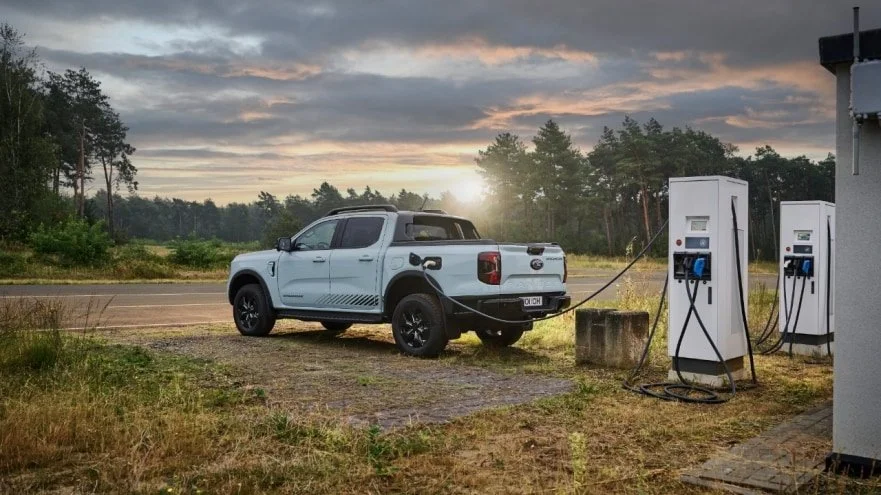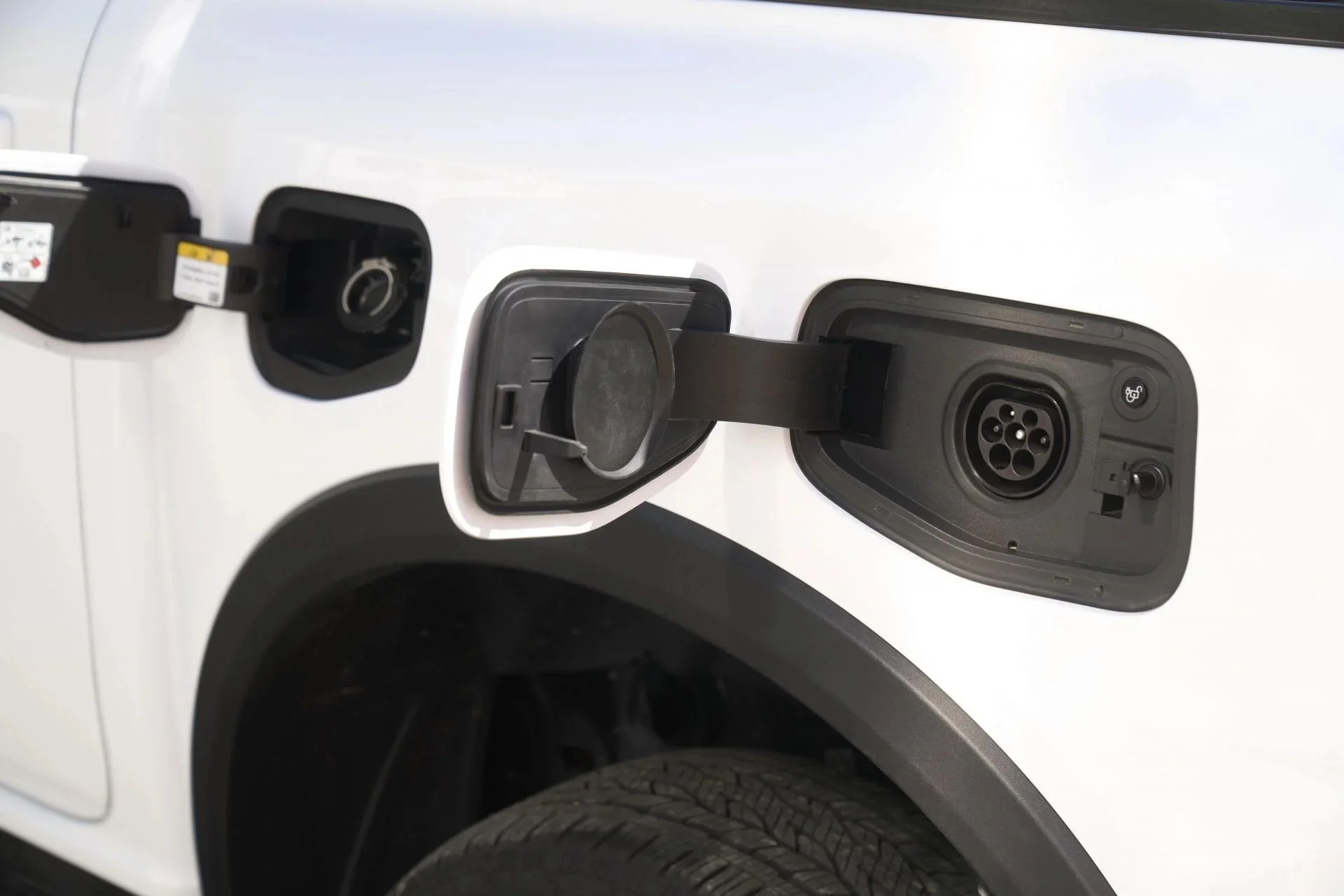LATEST NEWS
Configuration challenges zap flat deck electric Ranger
Richard Bosselman
June 5, 2025
Engineering for plug-in configuration inhibits useful rural and worksite configuration, conversion is not advised.
PLUG-in hybrid Ranger configuring to the logically most useful workplace and farm format - as a flat deck - doesn’t seem to be on Ford’s immediate radar, and the make is cautioning against that kind of conversion.
This emerges from reported conversation from senior involvers in the PHEV project and has been confirmed by Ford New Zealand today.
The entry XL Ranger reliant on a diesel engine is the sole choice now that configures beyond the double cab format and in single and super cab chassis is the sole Ranger delivering frrom factory with immediate provision to fit a flat deck.
It’s a low volume choice, but still popular with farmers and workplaces. Ford NZ spokesman Tom Clancy confirmed today that other variants that only provision in wellside are also being converted to flat deck, with the lower South Island being a particular hot spot.
Ford is also developing a Super Duty Ranger, an example of which will show at next week’s Fieldays near Hamilton, to meet that market sector, in wellside and flat deck, but it’s purely a V6 diesel. The flat deck is here for that event.
But it’s not a conversion that suits the PHEV arriving soon. The model which places its 207kW/697Nm plug-in hybrid, that delivers a 2.3-litre petrol four-cylinder with an electric motor augmented between the engine and transmission, in three double cab variants - the familiar XLT and Wildtrak trims and a new Stormtrak that sites closest to the Raptor - is not designed to be reconfigured.
All come with a hefty premium but past brand suggestion has always been that this being the only Ranger with external power outlets, feeding off the electric drive battery, would make it useful for tradie and related application. It has produced promotional material highlighting this.
At same token, indication from Ford now suggests any other format other than a wellside isn’t probably due to engineering and safety challenges.
It has made clear it doesn't want owners to remove the wellside and retrofit a steel tray.
Tenor of reported comment from senior Ford people on the project leaves impression that would be alarmed if anyone tried. CLancy says he understands a fix might be in the works, but he doesn’t know when it will effect.
He says Ford NZ would like to see a flat deck with PHEV, as the market for that styling configuration, though small, “is important.” In the interim, he has joined his colleagues in Australia in cautioning against conversion saying “at the moment you cannot take the wellside off.”
Ford says critical features are protected by the wellside tub, as well as the fuelling system, the integrated high-voltage system and a whole raft of critical components in the back.
The is made clear from press reports by media in Australia out of last week’s media event, corralled by a popular Ford enthusiast website in North America. No New Zealand media on the trip appear to have twigged to the issue.
Commented FordAuthority: “Given the capability of the Ford Ranger PHEV, one may assume that it would make a perfect fleet vehicle as well, one that commercial customers could upfit in various ways to suit their needs.
“However, that isn’t exactly the case, it seems.”
It says Ford is telling consumers not to consider purchasing a Ranger PHEV and replacing its bed with something like a steel tray or even a canopy.
In terms of swapping out the bed of the Ranger PHEV, it quotes chief programme engineer Phil Millar saying that “at this point, we’re not recommending you do that.
“There’s a number of critical features under the vehicle that are protected by the tub, as well as the fueling system, the integrated high-voltage system, a whole raft of critical components in the back.
“There’s other integrated systems like a… fuel vapour recovery system. There could be long periods of time running that (internal combustion engine), building up vapour in the system.
“So it’s got a locking fuel door, which then, when run off the fuel door button inside, which is unique to PHEV, allows the system to vent.”
As previously reported, the PHEV’s 11.8 kWh battery is mounted to the chassis rails under the bed, but Ford Authority says that doesn’t mean one should go and replace it.
Millar is quoted as saying: “It’s mounted on the chassis. If you see underneath, the battery’s got an aluminium casing with in-built cooling channels at the bottom of the casing, and that’s mounted up and on top of the spare wheel.”
Ford has suggested owners could face warranty issues if they opt to ignore its advice.
Primary attraction from the new powertrain is that it is much more economical than any current Ranger powertrain, with Ford claiming a economy figure of 2.8 litres per 100km judged by using the NZ-relevant WLTP calibration.
That figure applies when the battery is fully charged and would make it as thrifty as its most parsimonious petrol PHEV passenger car here, a version of the Escape.
The least thirsty fully ICE Ranger here has a 2.0-litre biturbo diesel that is claimed to achieve 7.6 litres per 100km.
An optimal emissions count of 64 grams per kilometre is almost one quarter that from the current cleanest combustion in Ranger, a version of the biturbo that demands AdBlue additive.
The PHEV Ranger can also run solely on its 75kW e-motor for up to 43 kilometres; which is well beyond the cited EV-pure ranges of two rivals from China, the BYD Shark 6 and GWM Cannon Alpha PHEV, which also purely configure as wellside models but are also aiming more at the lifestyle market.
The PHEV also has a 70 litre fuel tank so conceivably has the greatest range yet of any Ranger. The drivetrain runs with a version of the 10-speed automatic already familiar to NZ.
The savings in driving need to be weighed up against the powertrain’s premium.
The entry XLT will sell for $82,990, a $15,500 step up from the 154kW/500Nm biturbo diesel in identical double cab format.
At $89,990, the Wildtrak - which has long been the favourite with customers mixing workday usage with weekend fun - is much close to its fully internal combustion engined sisters ships.
A Wildtrack biturbo is $76,990 while the alternate with the 184kW/600Nm diesel V6 is $84,990.
In positioning at $94,990, Stormtrak is $1500 below the Raptor with the most powerful engine in Ranger-dom, a petrol V6 making 292kW and 583Nm. Stormtrak is $8000 more than a 2.0-litre biturbo Raptor.
Ranger has been NZ’s top-selling ute for 10 years - a period in which it has sometimes also been the country’s best-selling new passenger model - and having dropped off in early 2025, volume seems to have picked up again.
It topped the sales charts last month with 1051 registrations, with two Toyotas - the Hilux on 910 registrations and RAV4’s with 666 - holding second and third.



